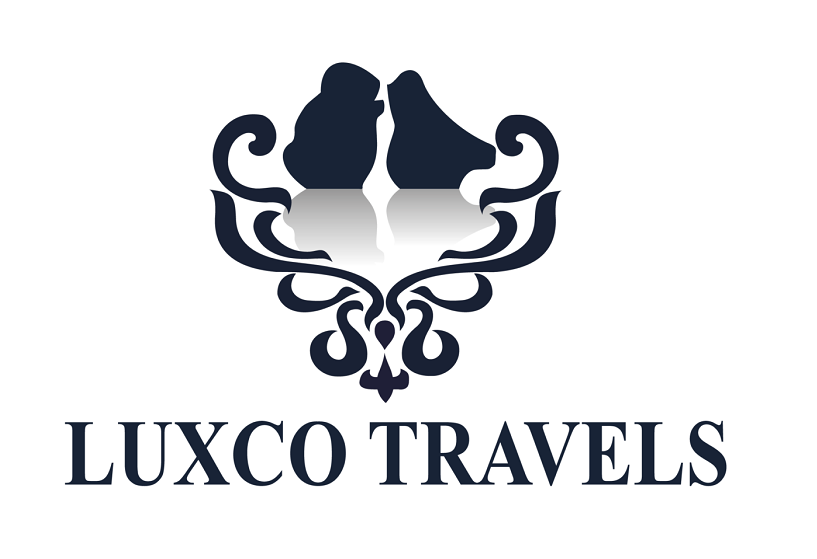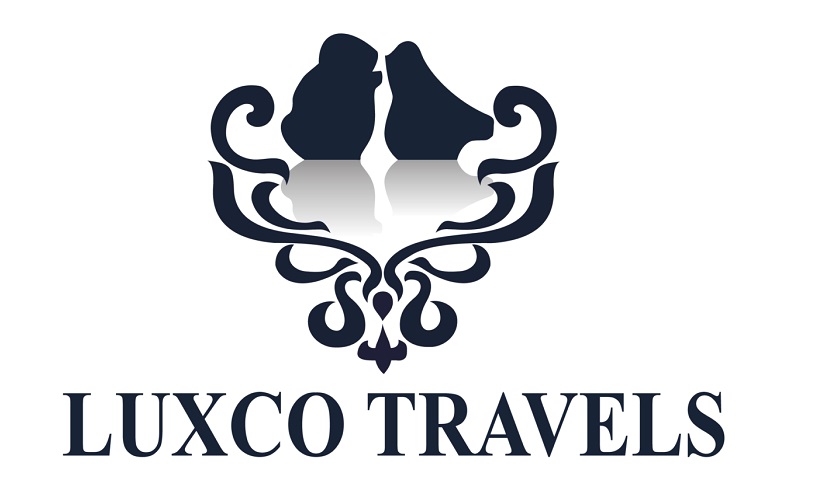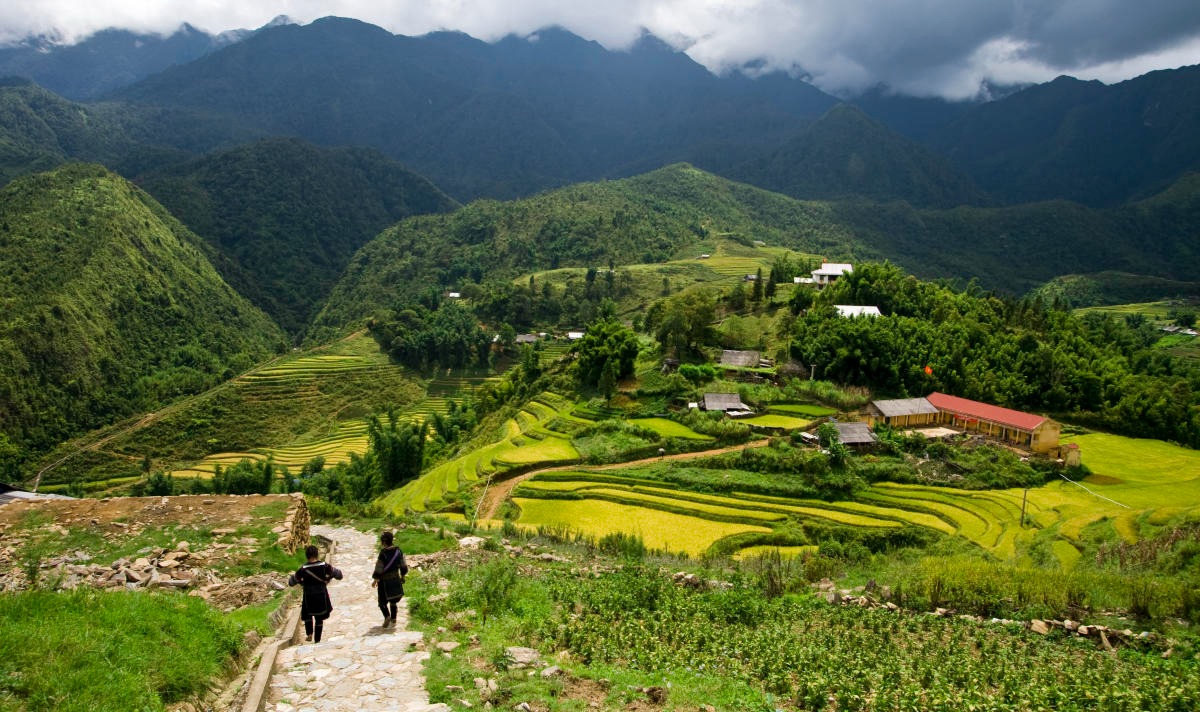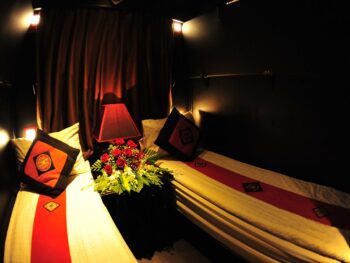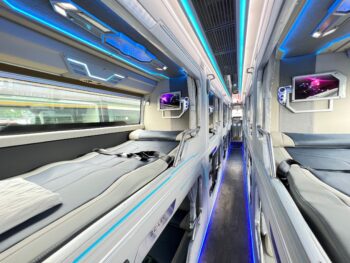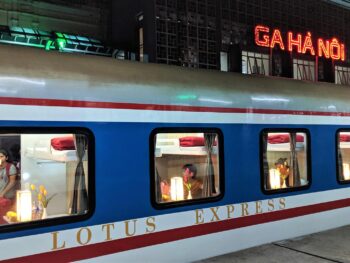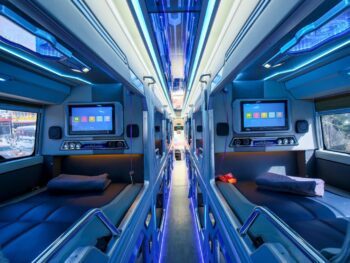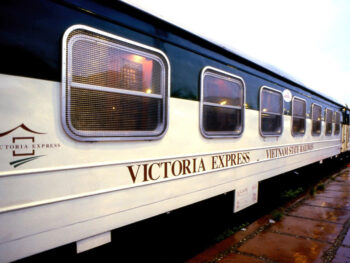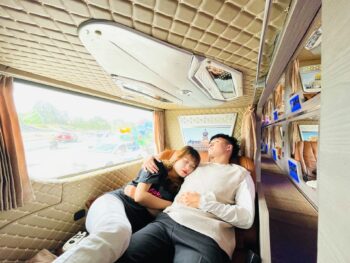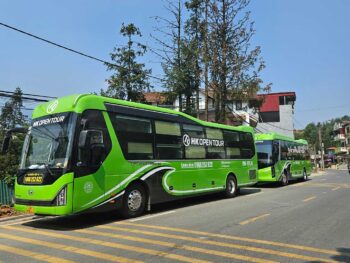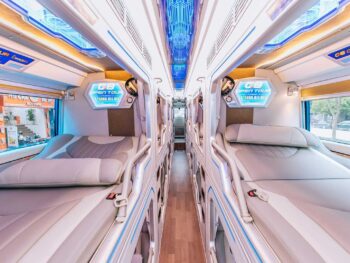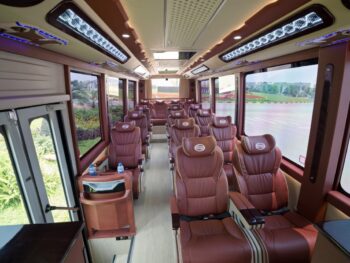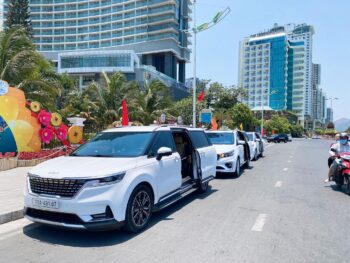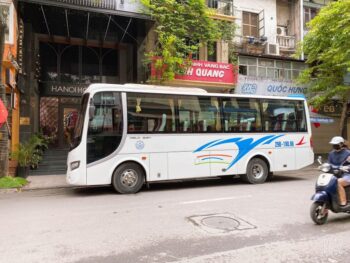Introduction
Envision Sapa in July: torrential rains cascade over vibrant rice terraces, painting them a vivid emerald green, while warm mists cloak jagged peaks in an ethereal haze, and the highlands of Vietnam thrum with the raw, untamed energy of the monsoon’s peak. Sapa weather in July is a dramatic fusion of heat, heavy rainfall, and lush, thriving beauty—a call to adventure for those bold enough to embrace it. This month brings warm days averaging 27–31°C, intense downpours that reshape the landscape, and a prime opportunity to trek muddy trails, uncover resilient cultures, and photograph the highlands in their wet-season splendor. In this exhaustive guide, we’ll break down the climate with meticulous detail, spotlight the best July-friendly destinations with insider secrets, provide an extensive packing list tailored to monsoon conditions, and share a wealth of strategies—including a highly detailed 3-day itinerary—to help you craft a memorable Sapa monsoon adventure. Whether you’re a trekker seeking a muddy challenge, a culture enthusiast drawn to rain-soaked markets, or a photographer chasing misty masterpieces, July’s monsoon majesty offers a Sapa experience like no other—raw, immersive, and unforgettable.
Sapa Weather in July: Climate Breakdown
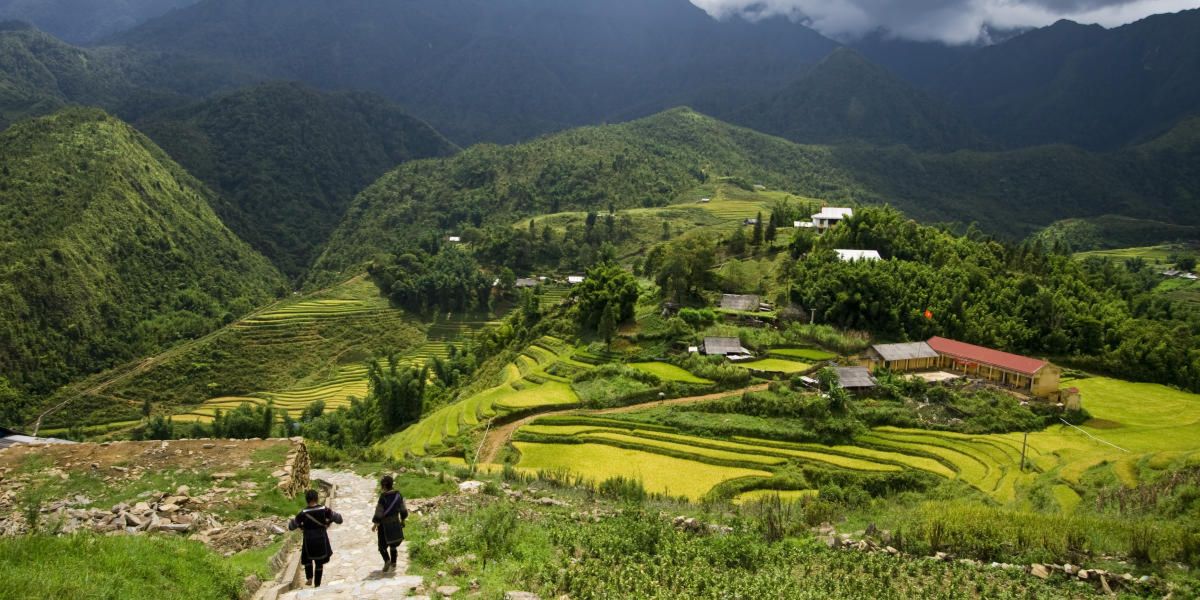
Temperature Profile
July sweeps into Sapa with warm, tropical heat, with daytime highs ranging from 27–31°C (81–88°F)—a slight dip from June’s blistering 28–32°C, but still steamy enough to feel the tropics in full force. Lower elevations like Sapa town, Cat Cat, and Ta Van simmer under the sun, softened only by frequent cloud cover or rain. Nights settle into a balmy 20–24°C (68–75°F), offering a humid reprieve that’s cooler at higher altitudes like Fansipan (3,143 meters) or Tram Ton Pass (1,900 meters), where breezes whisper through the mist. Compared to June’s peak heat or August’s cooler shift (26–30°C), Sapa weather in July balances warmth with the monsoon’s cooling rains—a sweet spot for lightweight gear and layered flexibility. Based on data from Vietnam Meteorological Department.
Rainfall & Humidity
Rainfall hits its stride at 250–300mm, placing July squarely in the heart of Sapa’s wet season. Expect frequent, powerful showers—often 40–60 minutes of torrential downpour—striking daily, with 18–22 rainy days in the month. Mornings might tease with brief dry spells (6–10 AM), but by noon, the skies unleash their load, peaking in the afternoon and evening with thunderous intensity. Humidity soars to 85–95%, saturating the air with a sticky, tropical moisture that clings to skin, fogs up glasses, and fuels the highlands’ dense greenery—think misty mornings, swollen rivers, and jungle-like trails. Matching June’s deluge and just shy of August’s 300–350mm, July’s rains are a monsoon masterpiece—transformative and relentless.
Visibility Conditions
Cloudy, foggy skies reign in July, wrapping Sapa’s peaks and valleys in a thick, moody mist that can reduce visibility to a few dozen meters. Landmarks like Muong Hoa Valley or Love Waterfall often vanish behind a gray curtain, only to reappear in fleeting, rain-washed clarity after a shower. These brief clearings—sometimes lasting 10–20 minutes—reveal glistening terraces and distant ridges, but don’t count on sustained vistas. Unlike June’s slightly sharper breaks or August’s heavier haze, Sapa weather in July leans into a wet, atmospheric vibe—perfect for moody photography or introspective treks through the fog.
Weather Comparison for Context
To frame July’s appeal: June is hotter (28–32°C) with similar rain (250–300mm), ideal for heat lovers, while August ramps up rainfall (300–350mm) and cools slightly (26–30°C), favoring indoor escapes. July sits as Sapa’s monsoon majesty peak—warm, drenched, and vibrantly alive—offering a balance of heat and rain that adventurous souls will relish.
Why Visit Sapa in July?

Peak Greenery in Rice Terraces
July’s rains push Sapa’s rice terraces to their fullest, greenest glory—the Sapa rice terraces July shimmer with a jungle-like density as rice plants thrive in waterlogged soil. Muong Hoa Valley unfurls endless tiers of green, best viewed from Lao Chai’s hilltops (8 km from Sapa) or Ta Van’s muddy trails—bring binoculars for distant details. Cat Cat Village frames its terraces with swollen streams, while Ham Rong Mountain ($3 USD entry, 1–2 hours) offers a sweaty climb to a panoramic overlook—rain often clears the crowds. Pro tip: visit post-shower (10–15 minutes after rain) for reflective surfaces and richer colors; the wet soil amplifies the green like a natural filter.
Majestic Monsoon Waterfalls
The monsoon turns Sapa’s waterfalls into thundering titans. Silver Waterfall (Thac Bac), 12 kilometers from Sapa town, roars over 100 meters, its misty spray a cooling oasis—climb 200 slick steps ($1 USD entry) for the full effect, but watch your footing. Love Waterfall, 14 kilometers southwest near Ban Ho, surges through dense forest with a 100-meter drop—its 3-km trail from the road (motorbike parking $2 USD) is a muddy slog worth the reward. Lesser-known cascades like Giang Ta Chai (near Ta Phin) or Thanh Phu (near Ban Ho) flow fiercely amid bamboo—quiet gems for intrepid explorers. July’s rain makes these falls a symphony of power and mist.
Wet-Weather Trekking Excitement
Warm days at 27–31°C and relentless rain turn Sapa’s trails into a thrilling monsoon gauntlet. Muong Hoa Valley’s 6–8 km trek from Lao Chai to Ta Van weaves through water-soaked terraces and slippery bridges—mud cakes boots, but the misty air refreshes. The 2-day Fansipan ascent ($50–70 USD with a guide, 15–20 km total) tests grit with slick rocks and foggy peaks—summit views are rare, but the journey’s rawness is the prize. Shorter paths like Cat Cat (3 km round-trip) or Ta Phin (12 km loop) offer wet-season charm with gushing streams and misty vistas. July’s Sapa monsoon adventure is a badge of honor—every muddy step a story.
Cultural Resilience in the Rain
Sapa’s ethnic communities—Hmong, Dao, Tay—shine with monsoon resilience. Bac Ha Sunday Market (2.5-hour drive, $10–15 USD taxi) buzzes under tarps, with traders in vibrant dress selling rice wine ($1 USD/shot), buffalo meat ($3 USD), and handwoven textiles ($5–20 USD)—arrive by 8 AM for the freshest picks. Cat Cat’s Hmong villagers weave under covered porches, offering indigo-dyed scarves ($10 USD) and tea ($1 USD) as rain drums overhead. Sapa town’s indoor market near the stone church hums with vendors—try thang co (horse stew, $3 USD) for a bold taste of tradition. July’s wet season reveals a culture that thrives in adversity—warm, welcoming, and unbowed.
Hidden Benefits
Fewer crowds than June or August mean quieter trails—Muong Hoa or Cat Cat feel like yours alone. Lush photo ops post-rain—think glistening greens and misty peaks—reward patient shutterbugs with rain sleeves. Budget perks shine too: homestays drop to $8–15 USD/night, and motorbike rentals ($6–10 USD/day) come cheap in the off-peak wet season—more cash for rice wine or market finds.
Challenges of Sapa in July
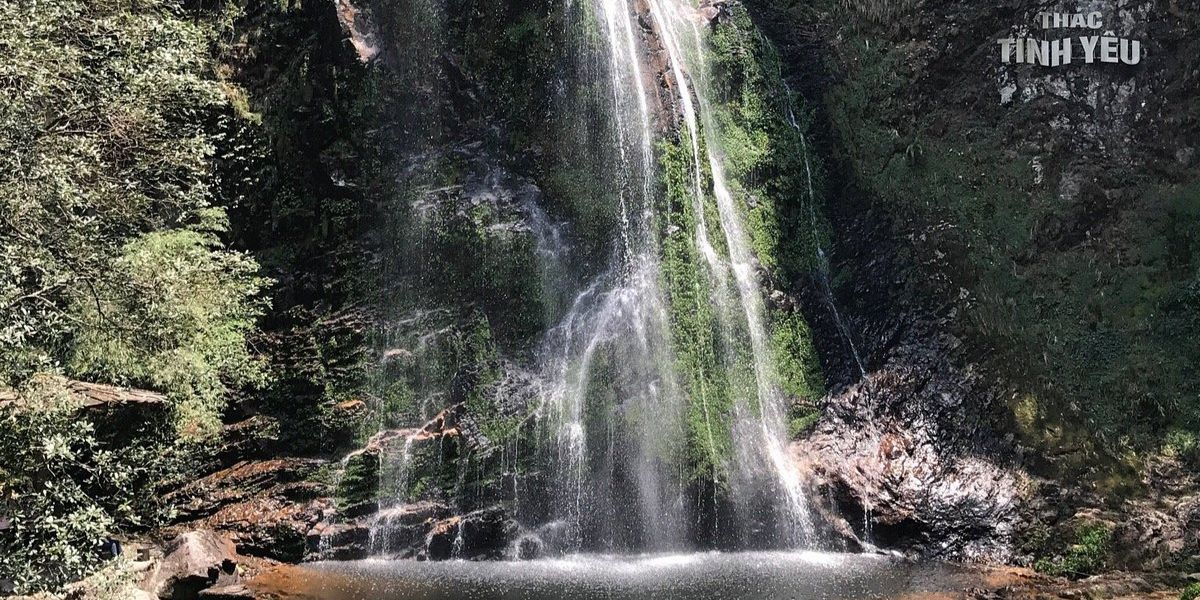
Intense Rainfall
Heavy showers averaging 250–300mm flood Sapa daily, turning trails into muddy quagmires and roads into slick hazards. Muong Hoa’s bamboo bridges sway under water, and Fansipan’s rocky paths demand slow, deliberate steps—trekking poles are a must. Motorbiking to Love Waterfall requires caution—wet curves bite hard. Mornings (6–10 AM) offer the driest slots; afternoons often drown in rain—plan outdoor time tight.
High Humidity
Humidity at 85–95% fuses with 27–31°C warmth to create a sticky, sauna-like grip—sweat soaks through fast in Ta Van or Sapa town. Homestays without fans feel stifling, and drying clothes is a lost cause—breathable fabrics and hydration (3–4L/day) are non-negotiable. Evenings at 20–24°C stay muggy—sleep can be restless without ventilation.
Fog and Reduced Visibility
Thick mist and clouds cloak Sapa’s vistas, often hiding Silver Waterfall or Muong Hoa behind a gray wall—visibility can drop to 20–30 meters. Brief clearings post-rain (10–20 minutes) tease with glimpses, but don’t expect sustained views—July’s fog is a constant companion. Photographers face soft-focus challenges; trekkers need GPS or guides for foggy trails—compasses beat dead phones.
Solutions to Thrive
Waterproof gear (ponchos, boots) beats rain, cooling tools (fans, electrolyte packets) tame humidity, and indoor backups (markets, cafes) fill foggy hours—July’s challenges are part of its wild charm with the right prep.
What to Pack for Sapa in July
Clothing Must-Haves
Pack quick-dry shirts (polyester, $15–25 USD each) and breathable pants or shorts—cotton clings in humidity. A hooded rain jacket (e.g., North Face Venture, $80–120 USD) is your monsoon armor, paired with a waterproof hat ($10–20 USD) for sun and rain. Add a long-sleeve top or thin fleece (e.g., Patagonia R1, $100 USD) for warm nights (20–24°C) and breezy peaks—layering saves you. Bring 4–5 pairs of moisture-wicking socks ($5–10 USD/pair)—wet feet invite blisters; extras are gold.
Footwear Essentials
Waterproof trekking boots with deep lugs (e.g., Salomon Quest, $120–150 USD) grip muddy trails like Muong Hoa or wet rocks near Love Waterfall—break them in to avoid rubs. Sandals (e.g., Teva Hurricane, $60–80 USD) offer wet relief at homestays or post-rain strolls—barefoot indoors is norm. Pack a plastic bag or waterproof shoe pouch ($5 USD) for soggy boots—keeps your pack clean.
Gear Necessities
A rain poncho ($5–10 USD, reusable) backs up your jacket, while a waterproof backpack (20–30L, e.g., Osprey Tempest, $100 USD) or rain cover ($15 USD) shields gear—vital for electronics. Photographers need a camera rain sleeve (e.g., Altura, $20 USD), lens cloth ($2 USD), and lightweight tripod (Joby GorillaPod, $30 USD) for misty shots. A USB-rechargeable fan ($15 USD) or cooling towel ($10 USD) cuts humidity, and a 10,000mAh power bank ($20 USD) powers devices on wet treks—outlets are spotty.
Health & Comfort Items
Sunscreen (SPF 50+, water-resistant, $10 USD) fights UV through clouds—reapply every 2–3 hours; UV index hits 8–10 even in rain. Insect repellent (DEET 30%, $8 USD) repels mosquitoes swarming in wet heat—spray legs, arms, and neck. Electrolyte packets (e.g., Nuun, $1 USD each) or a 2L hydration bladder ($25 USD) keep you fueled—July’s heat drains fast. Anti-fungal foot cream (e.g., Lotrimin, $10 USD) prevents rot from soaked shoes; a first-aid kit ($15 USD) with bandages, antiseptic, ibuprofen, and anti-diarrheal meds covers slips, bites, or market food risks.
Packing Pro Tips
Download our free for a printable guide. Pack a quick-dry microfiber towel ($10 USD) for rain wipe-downs, silica gel packets ($5 USD/10) to dry gear in humid rooms, and a small dry bag (5–10L, $15 USD) for electronics—monsoon lifesavers. Toss in a lightweight umbrella ($10 USD) for casual strolls—ponchos free your hands on trails.
Best Places to Explore in Sapa in July
Muong Hoa Valley
Sapa’s trekking crown, Muong Hoa, thrives in July with lush, water-soaked terraces and swollen rivers. Start at Lao Chai (8 km from Sapa, $1 USD motorbike parking) and hike 6–8 km to Ta Van, crossing muddy bridges and passing ancient rock carvings—bring a stick for balance. The Sapa rice terraces July glow under rain, fog adding a mystical veil—stop at a Hmong stall for banh mi ($1 USD) or tea ($0.50 USD). A full day (5–7 hours) here is a monsoon must—pack a picnic for a mid-trail break.
Love Waterfall
Fourteen kilometers southwest near Ban Ho, Love Waterfall surges with rain-fed fury, its 100-meter drop a thunderous spectacle amid dense forest. A 3-km hike from the trailhead (motorbike parking $2 USD) weaves through muddy paths and bamboo—wear boots; rocks slick up fast. July’s rain deepens the pools below—dip your feet if you dare (watch for leeches). Pair with a Ban Ho homestay ($10–15 USD/night) for a full day—grilled fish ($3 USD) seals the deal.
Cat Cat Village
Three kilometers from Sapa town, Cat Cat blends Hmong culture with muddy paths and swollen streams. Wander past stilt houses where locals weave indigo cloth ($10–15 USD/scarf) and cross a rain-swelled waterfall—July’s flow is fierce ($1 USD entry). A 2–3-hour round trip suits wet days; rent a motorbike ($6 USD/day) for the ride back. The misty ambiance and Hmong flute melodies (buy one for $3 USD) make it a cultural snapshot.
Sapa Town Indoor Spots
When rain pours, Sapa town’s indoor havens shine. The market near the stone church brims with Hmong embroidery ($5–20 USD), Dao silver jewelry ($10–30 USD), and steaming pho ($2 USD)—a dry refuge from July’s deluge. The Sapa Museum (free, 9 AM–5 PM) dives into Hmong and Dao history—think rice farming tools and traditional looms. Cafes like The Hill Station ($2–3 USD coffee) or Le Gecko offer valley views and Wi-Fi—perfect for rainy afternoons plotting your next move.
Hidden Gem: Ban Ho Village
Twenty-five kilometers from Sapa, Ban Ho offers an off-the-grid monsoon escape with Tay culture and waterlogged terraces. A 4-km trek from the road (taxi drop-off, $15 USD) leads to stilt houses and a small waterfall—July’s rain keeps it lush and quiet. Stay in a homestay ($10–15 USD/night) for rice wine ($1 USD) and bamboo-tube rice ($2 USD)—a serene retreat from Sapa’s bustle.
Travel Tips for Sapa in July
Transportation Tips
Motorbiking in July’s rain demands prep—rent a semi-automatic bike with wet tires ($6–10 USD/day) in Sapa town, test brakes, and crawl on slick roads like the route to Love Waterfall. Carry a repair kit ($5 USD), 1L spare fuel ($1 USD), and a helmet with a visor—visibility matters. From Lao Cai (35 km, night train from Hanoi $25–35 USD), take a shuttle (45 minutes, $3–5 USD) or 4WD taxi ($20 USD)—safer for wet hauls with gear or groups.
Accommodation Choices
Homestays in Cat Cat or Ban Ho ($8–15 USD/night) offer rain cover—seek tin roofs or porches; mosquito nets are a must (bugs thrive in July). In Sapa town, AC hotels like Sapa Horizon ($60–100 USD) or Topas Ecolodge ($100–150 USD) beat humidity—book 3–4 weeks ahead for July’s off-season rates. Check for power backup—rain can knock out rural grids.
Daily Planning
For July trekking tips Sapa, hit trails early (6–10 AM)—Muong Hoa or Cat Cat dry briefly before noon rains. Shift indoors by afternoon—Bac Ha Market (Sundays, $10 taxi), Sapa Museum, or cafes like Gem Valley ($2 USD coffee, valley views). Pack a rain cover, trekking poles, and snacks—trailside stalls thin out in rural wet zones.
Sample 3-Day July Itinerary
This tailor-made 3-day itinerary balances Sapa’s monsoon majesty with practical pacing, cultural immersion, and weather-smart planning—perfect for adventurous travelers seeking a mix of nature, culture, and comfort. It assumes you’re arriving from Hanoi via the overnight train to Lao Cai (8–9 hours, $25–35 USD one-way), a popular route for Sapa visitors.
- Day 1: Arrival & Sapa Town Exploration (Cultural Warm-Up)
- 5:30 AM – Arrival in Lao Cai: Step off the night train (book a soft sleeper for comfort—SP3 or SP1 trains depart Hanoi 9–10 PM). Stretch your legs at Lao Cai station—grab a quick banh mi ($1 USD) from a vendor if peckish.
- 6:00 AM – Shuttle to Sapa: Board a shuttle (45 minutes, $3–5 USD, pre-book via your hotel or at the station) or hire a 4WD taxi ($20 USD, ideal for groups or heavy bags)—July’s rain makes the winding 35-km road slick, so 4WD ensures safety. Arrive in Sapa town by 7:00 AM.
- 7:30 AM – Check-In & Breakfast: Drop bags at your hotel (e.g., Sapa Horizon, $60–100 USD with AC and valley views—early check-in subject to availability). Fuel up at Le Gecko Café (5-minute walk from the stone church) with a Vietnamese coffee ($1.50 USD) and pho bo (beef noodle soup, $2 USD)—a hearty start to beat the humidity.
- 9:00 AM – Sapa Museum: Stroll 5 minutes to the free Sapa Museum (9 AM–5 PM, behind the Sapa Culture House). Spend 1–1.5 hours exploring Hmong and Dao exhibits—rice farming tools, traditional costumes, and a 3D map of Sapa’s terrain give context to your trip. Bring a poncho—July’s morning drizzle is likely.
- 11:00 AM – Indoor Market: Wander 2 minutes to the Sapa Market near the stone church. Browse Hmong embroidery ($5–20 USD), Dao silver bracelets ($10–30 USD), and local herbs—snag a bamboo flute ($3 USD) as a souvenir. Sample banh cuon (steamed rice rolls, $1 USD) from a stall—light yet filling.
- 12:30 PM – Lunch at The Hill Station: Head 5 minutes uphill (150 meters) to The Hill Station ($2–3 USD coffee, $5–7 USD mains). Savor grilled chicken with sticky rice ($6 USD) and a passion fruit juice ($2 USD)—indoor seating offers valley views if fog lifts. Relax as afternoon rain (1–3 PM) typically kicks in.
- 3:00 PM – Ham Rong Mountain (Optional): If rain eases (check radar apps like Windy), trek 1–2 hours up Ham Rong Mountain ($3 USD entry, 1,800 steps)—July’s mist softens the orchid gardens and panoramic lookout. Otherwise, linger at Gem Valley Café ($2 USD coffee) with a book or journal—rainy vibes suit slow moments.
- 6:00 PM – Dinner & Night Market: Dine at Sapa O’Chau Café (5-minute walk, $5–8 USD mains)—try pho chua (sour noodle soup, $5 USD) for a tangy twist. Post-dinner, explore the night market under tarps (5–10 PM)—grilled corn ($1 USD) and rice wine ($1 USD/shot) cap the day.
- 8:30 PM – Overnight: Return to your hotel—shower off humidity, charge devices (bring a multi-plug; outlets are limited), and rest for Day 2’s trek.
- Day 2: Muong Hoa Valley Trek & Ta Van Homestay (Nature Deep-Dive)
- 6:00 AM – Breakfast & Prep: Wake early—July’s dryish mornings are gold. Grab breakfast at your hotel (included or $3–5 USD buffet) or hit Cong Ca Phe (5-minute walk) for coconut coffee ($2 USD) and a croissant ($1 USD). Pack your day bag: water (2L), snacks (nuts, $2 USD), rain gear, camera, and trekking poles—mud awaits.
- 7:00 AM – Motorbike to Lao Chai: Rent a motorbike ($6–10 USD/day from Sapa town shops—Honda Wave or similar) or hire a driver ($10 USD one-way). Ride 8 km (20–30 minutes) to Lao Chai village—July’s wet roads demand slow speeds (15–20 km/h); park at the trailhead ($1 USD). Alternatively, join a guided trek ($20–30 USD, includes transport).
- 7:30 AM – Trek Begins: Start the 6–8 km Muong Hoa Valley trek (5–7 hours total). From Lao Chai, descend into rice terraces—July’s rain turns them into a glowing green sea. Cross a bamboo bridge (slippery—use poles) and pass ancient rock carvings (200+ etchings, 500 years old)—pause for photos; fog adds mystique. Terrain’s muddy—expect 20–30% slower pace (1–1.5 km/h).
- 10:00 AM – Mid-Trail Break: Rest at a Hmong stall (2–3 km in)—sip tea ($0.50 USD) or eat banh mi ($1 USD) under a tarp. Chat with locals (basic English)—ask about rice planting (May–June) or harvest (September); they’ll share monsoon tales. Hydrate—1L down, 1L to go.
- 12:30 PM – Lunch in Ta Van: Reach Ta Van village (6–8 km mark) by noon—July’s rain often hits now. Stop at a Giay family stall ($2–3 USD)—order com lam (bamboo-tube rice, $2 USD) and grilled pork ($1 USD). Eat under a stilt house porch—watch kids splash in puddles; it’s monsoon life unfiltered.
- 2:00 PM – Village Exploration: Wander Ta Van (1–2 hours)—muddy lanes lead to wooden homes and rice fields. Visit a Giay homestay (e.g., Ta Van Ecolodge, $8–15 USD/night)—book ahead for a bed, mosquito net, and fan (rare but clutch). Try a rice wine shot ($1 USD) with your host—ask about their buffalo (key to farming).
- 4:00 PM – Relax & Photos: Settle in—July’s afternoon rain (2–5 PM) is your cue to unwind. Sip tea ($0.50 USD) on the porch, photograph misty terraces (rain sleeve on), or nap to the rain’s rhythm—humidity naps hit different. Charge devices if power’s on—bring a power strip; rural outlets are shared.
- 6:30 PM – Dinner & Stories: Dine at your homestay—grilled chicken ($3 USD), bamboo shoots ($1 USD), and sticky rice ($1 USD)—home-cooked Giay style. Swap stories with hosts (via gestures or Google Translate)—July’s floods often spark tales of resilience. Sleep by 9 PM—roosters crow at 5 AM.
- Day 3: Love Waterfall, Cat Cat Village & Departure (Nature-Culture Finale)
- 5:30 AM – Wake & Breakfast: Rise with Ta Van’s roosters—July’s fog is thick. Eat a homestay breakfast (included or $2 USD)—pho ga (chicken noodle soup) or fried eggs with bread. Pack out—wet boots in a plastic bag, dry bag for electronics; leave a $1 USD tip if service shines.
- 6:30 AM – Motorbike to Love Waterfall: Ride 14 km southwest (30–40 minutes, $6 USD rental or $10 USD driver) to the Love Waterfall trailhead near Ban Ho—park ($2 USD). July’s wet roads need care—slow to 15 km/h on curves; visor down for rain splatter.
- 7:00 AM – Waterfall Trek: Start the 3-km hike (1.5–2 hours one-way)—muddy paths wind through bamboo and forest. July’s rain swells the 100-meter cascade—hear it roar 500 meters out. Reach the base by 8:30 AM—mist cools you; dip toes in pools (leech check after). Snap photos (tripod for long exposures)—fog softens the frame. Return by 10:30 AM—3–4 hours total.
- 11:00 AM – Quick Snack: Grab xoi (sticky rice, $1 USD) from a roadside stall near the trailhead—fuel for the ride back. Hydrate—1L water here; July’s heat creeps up post-trek.
- 11:30 AM – Ride to Sapa: Motor 14 km back (30–40 minutes)—arrive by 12:15 PM. Drop the bike ($6–10 USD total) and retrieve bags from your hotel (store free if checked out).
- 12:30 PM – Lunch & Cat Cat Village: Eat at Red Dao House ($5–8 USD mains)—try pork with bamboo shoots ($6 USD) and a mango smoothie ($2 USD). Take a motorbike taxi ($3 USD one-way) or ride ($6 USD/day) 3 km to Cat Cat Village ($1 USD entry)—arrive by 1:30 PM.
- 1:45 PM – Cat Cat Exploration: Spend 2–3 hours—wander muddy lanes past Hmong stilt houses weaving indigo cloth ($10–15 USD/scarf). Cross the rain-swelled waterfall (200-meter bridge)—July’s flow is fierce; perfect for misty shots. Visit a handicraft stall—buy a flute ($3 USD) or herbal tea ($1 USD). Leave by 4:00 PM—rain often restarts then.
- 4:15 PM – Return to Sapa: Ride back (10 minutes)—freshen up at a hotel café (e.g., Sapa O’Chau, $1 USD tea) if needed. Grab a banh mi ($1 USD) for the road—shuttles don’t stop.
- 5:00 PM – Shuttle to Lao Cai: Catch a shuttle (45 minutes, $3–5 USD, departs hourly)—arrive Lao Cai by 5:45 PM. Train back to Hanoi (e.g., SP4, 8:30 PM departure, $25–35 USD)—book a soft sleeper; July’s rain makes the ride cozy.
Tweak for Bac Ha if Sunday aligns—swap Day 2 for a 6 AM taxi ($10–15 USD) to the market (8 AM–2 PM), then return for a Sapa night!
FAQs About Sapa Weather in July
“Is July too rainy for Sapa travel?”
Heavy rain (250–300mm) hits daily, but adventures thrive with waterproof gear—mornings offer drier windows; trails stay open.
“How warm is Sapa in July?”
Warm at 27–31°C—humid but not June-hot; hydrate with 3–4L/day and layer light.
“Are rice terraces at their best in July?”
Yes, full and green—rain turns them into a lush, reflective marvel, peaking before August’s over-saturation.
“What’s a good indoor option in Sapa in July?”
Markets shine—Sapa town’s stalls or Bac Ha (Sundays) offer culture and shelter; cafes like Le Gecko add cozy vibes.
“How does July rain affect trekking?”
Mud slows you down—expect 20–30% longer hikes; boots, poles, and early starts keep it doable.
Conclusion
Sapa weather in July unfurls a breathtaking tapestry of warm, rainy days, lush landscapes, and monsoon majesty—a season where Vietnam’s northern highlands roar with life. From the verdant splendor of Sapa rice terraces July to the rain-fueled fury of Love Waterfall, this month dares you to trek through mud, savor resilient traditions, and capture misty beauty in Sapa’s wet-season prime. Wondering about the best time to visit Sapa? July’s bold, drenched allure is a standout for adventurers who crave the wild. Pack your rain gear, fuel your spirit, and dive into Sapa’s monsoon majesty this July—your highland epic awaits!
